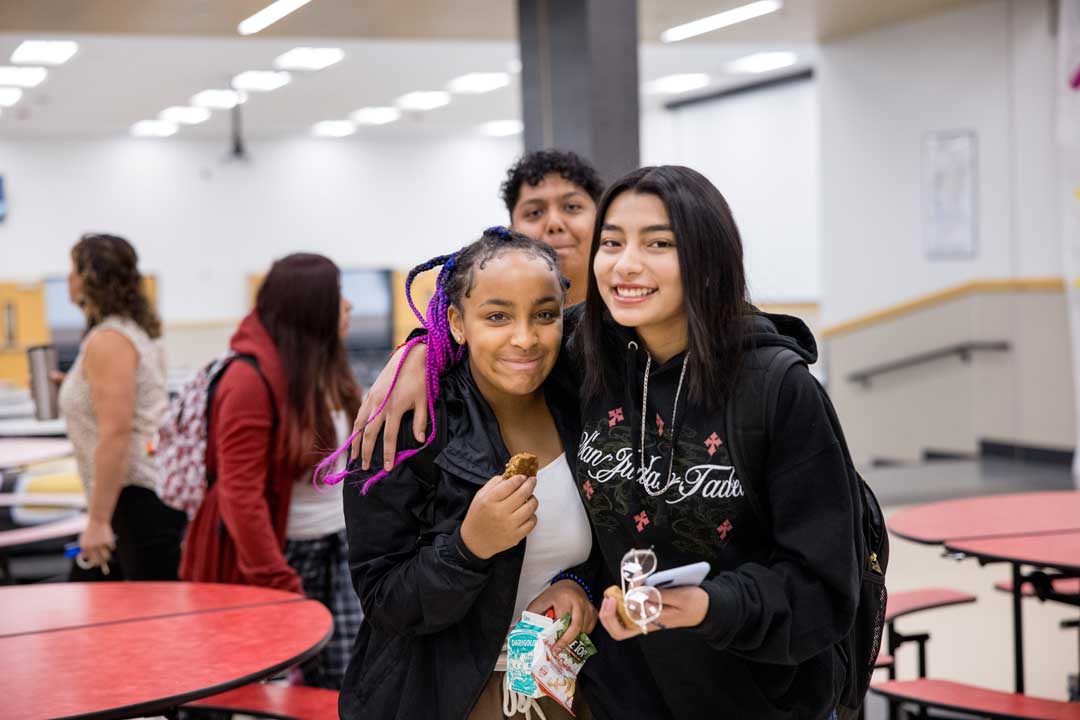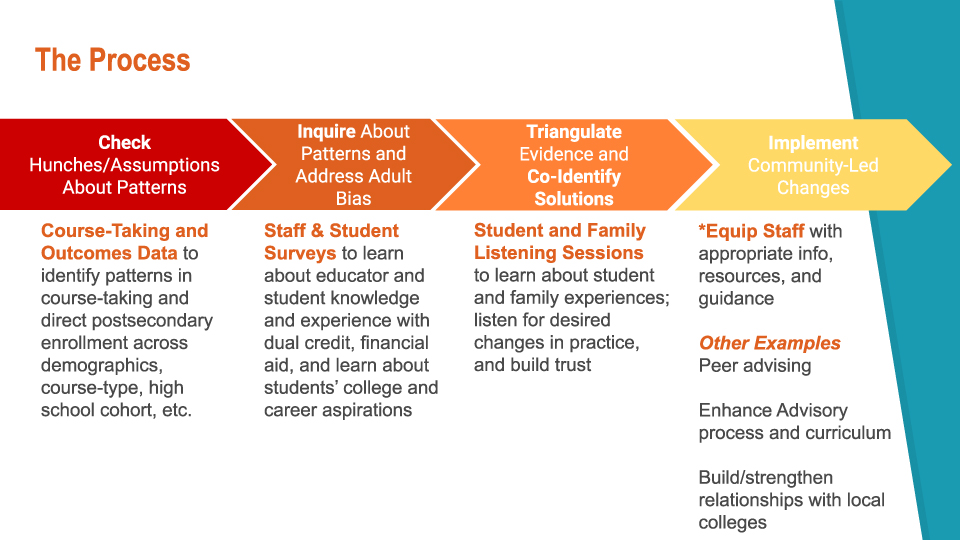High School to Postsecondary Collaborative
High School to Postsecondary Collaborative
OVERVIEW
In 2019, a college and career readiness counselor at Eisenhower High School (EHS) in Yakima had a hunch that students were not accessing dual credit courses equitably. He asked Washington STEM and the South-Central STEM Network for help in digging into enrollment data. Together they formed a partnership to find answers, and the results prompted EHS—with significant community involvement—to make changes in their dual credit programs: they increased the number of courses offered, provided training in dual credit to all staff, and improved outreach to bilingual students and families about dual credit and postsecondary opportunities. This successful partnership led Washington STEM and regional education leaders to expand statewide, forming the High School to Postsecondary Collaborative, with nine regional and district leads and 40+ schools across the state focused on improving postsecondary preparation and transitions.

Partnership
In 2019, staff at Eisenhower High School (EHS) wanted to understand how student enrollment in dual credit programs during high school correlated with their enrollment and completion of postsecondary programs. They partnered with Washington STEM and Yakima’s South-Central STEM network to access and analyze course-taking data and postsecondary enrollment data from the past five years. They also conducted surveys and interviews with staff and the 2,200-student body, 73% of whom are Latinx. When it was time to review and understand the patterns showing up in the data Washington STEM presented, EHS leadership engaged the entire school staff as critical partners to craft solutions to improve student awareness and access to dual credit.
Building on what was learned at EHS, Washington STEM has since expanded the project to form the High School to Postsecondary Collaborative. The Collaborative includes 40+ schools across the state, including nine served by the South-Central region, who are collecting and analyzing dual credit data while Washington STEM provides guidance on using community engagement when crafting solutions to expand dual credit opportunities and light up career pathways for all students.
Direct Support
When EHS asked the question, “Who is being left out?” Washington STEM helped them access, combine, and analyze the student demographics, postsecondary enrollment and historical course-taking data needed to answer it. The results showed discrepancies in dual credit enrollment based on gender and ethnicity; specifically, Latinx males were less likely to be enrolled in certain dual credit courses like higher levels of math. Next, Washington STEM coordinated with EHS to survey staff and students to understand their knowledge about dual credit and postsecondary opportunities. Among students, 88% reported they aspire to continue their education beyond high school while only 48% of school staff believed students had these aspirations. At the same time, students identified teachers as their primary source of information about dual credit courses and postsecondary career pathways, but only half the school staff said they had enough information to advise students.
With these findings in hand, EHS leadership partnered with students, teachers, staff, and families to craft solutions, including an increase in dual credit course offerings, a half-day staff training, student-led information sessions for 9th and 10th graders, and more bilingual communications to families about dual credit programs. Washington STEM also developed the High School to Postsecondary Toolkit to guide other schools, and is providing data dashboards for schools in the Collaborative so they will have enrollment data at their fingertips as they work to expand dual credit programs.

Advocacy
Today, only 50% of high school graduates in Washington enroll in higher education; however upwards of 80% of well-paying jobs in the state require some sort of postsecondary credential. This means many students, most often students of color and low-income students, will not have access to family-sustaining jobs and secure careers. The results of the High School to Postsecondary project demonstrate how enrollment in dual credit programs—an important lever to boost postsecondary enrollment—is often not equitable. As a result, students are less likely to complete their education and have access to the kinds of well-paying jobs that interrupt systemic, intergenerational poverty.
In 2022, Washington STEM made access to dual credit programs—like Running Start and College in the High School—a policy priority. Washington STEM shared initial outcomes from the High School to Postsecondary project with lawmakers and The Seattle Times to raise awareness and help pass a bill that requires the publishing of publicly-available dual credit course completion and equitability measures (HB 1867). With enrollment data now visible, schools will be able to respond to demographic discrepancies in dual credit enrollment and ensure students of color, young women, rural students, and those experiencing poverty have equitable access to programs that lead to well-lit career pathways. To further support dual credit, Washington STEM helped pass legislation that eliminated fees for the dual credit program, College in the High School (SB 5048), allows Running Start students to earn up to 10 credits during the summer term (HB 1316), and funded a pilot project with Skagit Valley College to offer dual credit for career technical education (CTE) classes.
Read more on how we are strengthening K-12 education.